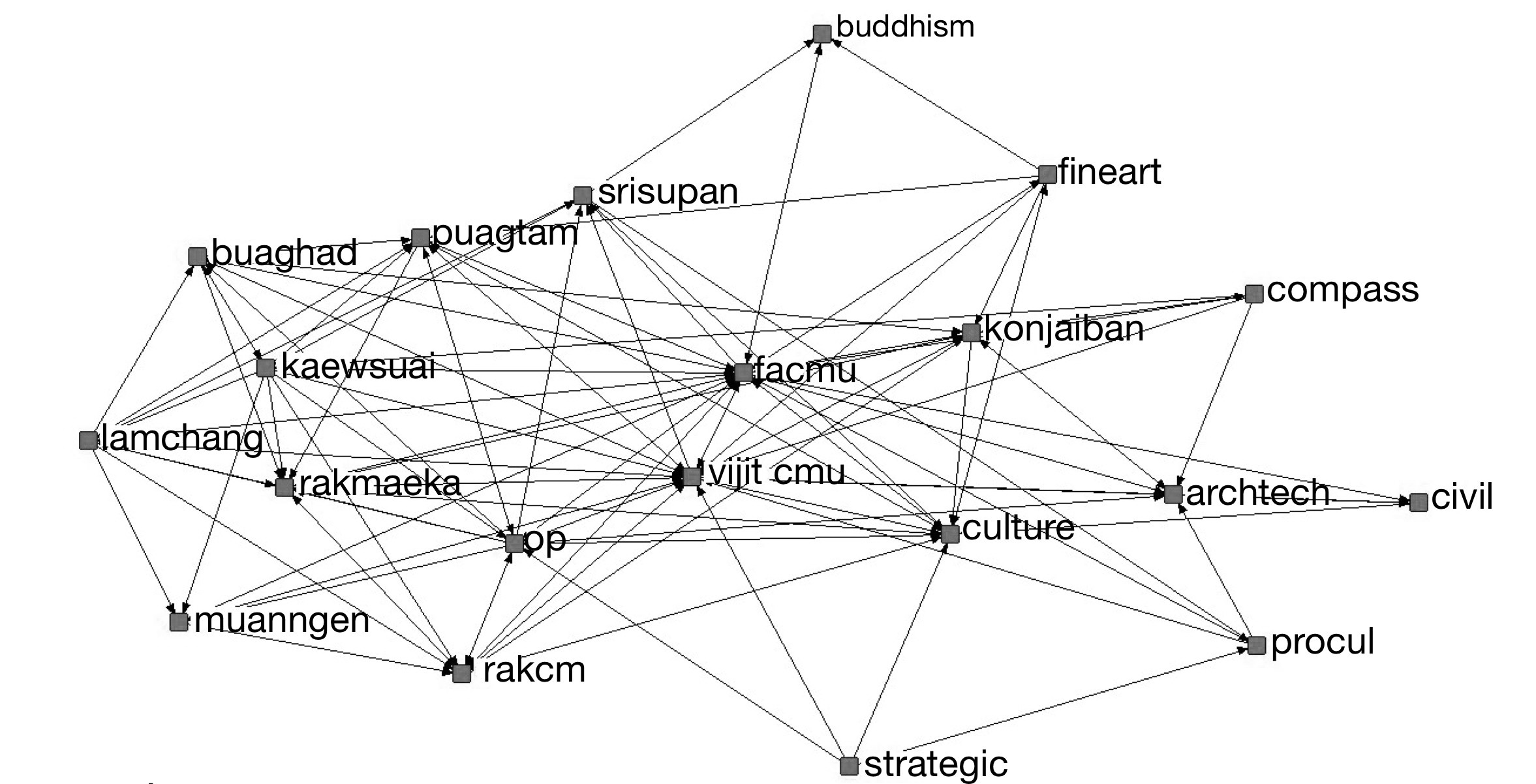The Study of Collaborative Structure of Pre-world Heritage Management; Case Study Chiang Mai, Thailand
Main Article Content
Abstract
The study of collaborative structure of pre-world heritage management, Chiang Mai, Thailand is very important, since the study result will help to manage the accurate and proper plan for Chiang Mai town’s characteristic. However, the management plan has the using of collaborative of stakeholders to be part of the process, which come up with the complexity in the process of analysis, which whether the trends of the management is appropriated with Chiang Mai, or not. This research aims to study the collaborative structure in the pre-world heritage management of Chiang Mai. It lays the idea’s frame of the research analysis on the social network analysis concept. This idea can analyze the solid management plan and reduce the complexity to understanding. The research demonstrated that the collaborative organizations, which joined in the management network of the pre-world heritage site of Chiang Mai, have prepared a diversity of organizations and the city resources. However, the collaborative process tends to aim at conserving the traditional communities to live with monuments, which actually is the concept of the living heritage approach, but in realities the urban physical of Chiang Mai has been changed considerably. The using of a classic conservation method, which monitoring the physical aspects first, seems to suit with the recent city situation. Then, when the urban physical is evaluated in a good condition. The living heritage approach can bring back to be a main concept of conservation in order to conserve both the urban physical and the traditional communities.
Downloads
Article Details

This work is licensed under a Creative Commons Attribution-NonCommercial-NoDerivatives 4.0 International License.
All material is licensed under the terms of the Creative Commons Attribution 4.0 International (CC-BY-NC-ND 4.0) License, unless otherwise stated. As such, authors are free to share, copy, and redistribute the material in any medium or format. The authors must give appropriate credit, provide a link to the license, and indicate if changes were made. The authors may do so in any reasonable manner, but not in any way that suggests the licensor endorses you or your use. The authors may not use the material for commercial purposes. If the authors remix, transform, or build upon the material, they may not distribute the modified material, unless permission is obtained from JARS. Final, accepted versions of the paper may be posted on third party repositories, provided appropriate acknowledgement to the original source is clearly noted.
References
Chiang Mai World Heritage Working Group. (2017). (The action plan project of conservation and development in historical and cultural areas of Chiang Mai according to the guideline of World Heritage (phase 1)). Chiang Mai, Thailand: Authors.
Pryke, S. (2012). Social network analysis in construction. Hoboken, New Jersey: Wiley-Blackwell.
Sandström, A., & Carlsson, L. (2008). The performance of policy networks: The relation between network structure and network performance. Policy Studies Journal, 36(4), 497-524. DOI: 10.1111/j.1541-0072.2008.00281.x.
Sandström, A. C., & Rova, C. V. (2010). The network structure of adaptive governance - A single case study of a fish management area. International Journal of the Commons, 4(1), 528–551. Retrived from http://ltu.diva-portal.org/smash/get/diva2:982698/FULLTEXT01.pdf.
Tunprawat, P. (2018). Managing living heritage sites in mainland southeast asia. (Doctoral thesis). Silpakorn University, Bangkok. Retrieved from http://www.thapra.lib.su.ac.th/objects/thesis/fulltext/thapra/Patcharawee_Tunprawat_Doctor/Fulltext.pdf, checked on 4/4/2018.
Wasserman, S., & Faust, K. (1994). Social network analysis: Methods and applications. Cambridge, New York: Cambridge University Press.


